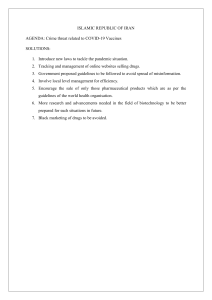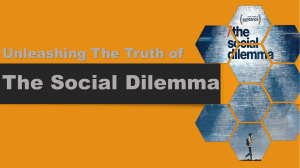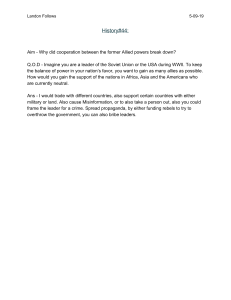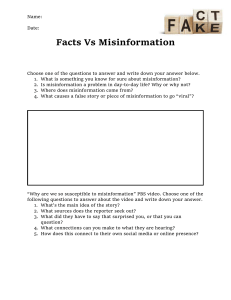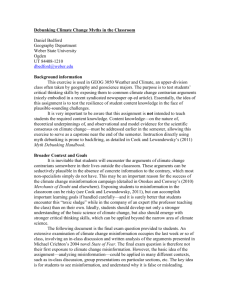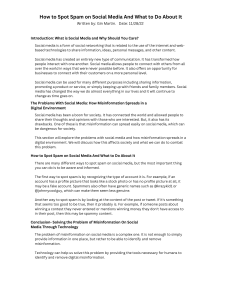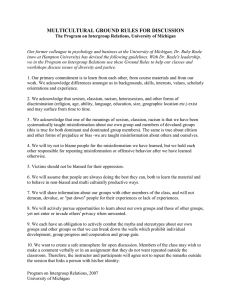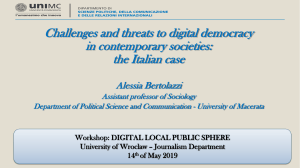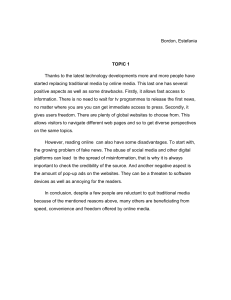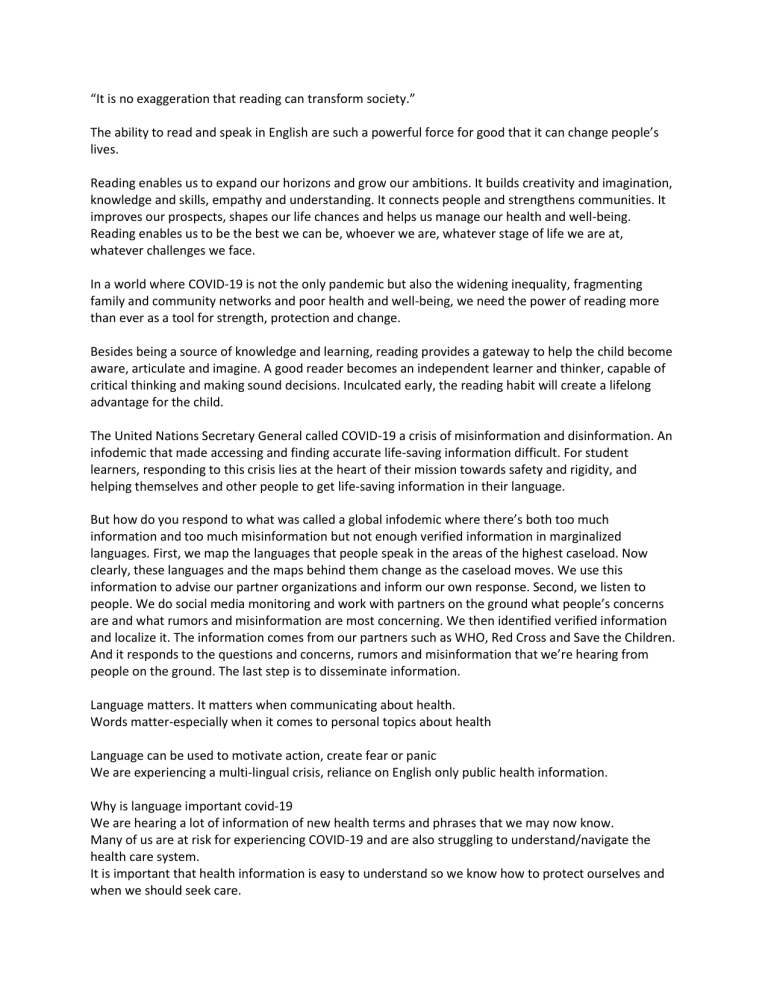
“It is no exaggeration that reading can transform society.” The ability to read and speak in English are such a powerful force for good that it can change people’s lives. Reading enables us to expand our horizons and grow our ambitions. It builds creativity and imagination, knowledge and skills, empathy and understanding. It connects people and strengthens communities. It improves our prospects, shapes our life chances and helps us manage our health and well-being. Reading enables us to be the best we can be, whoever we are, whatever stage of life we are at, whatever challenges we face. In a world where COVID-19 is not the only pandemic but also the widening inequality, fragmenting family and community networks and poor health and well-being, we need the power of reading more than ever as a tool for strength, protection and change. Besides being a source of knowledge and learning, reading provides a gateway to help the child become aware, articulate and imagine. A good reader becomes an independent learner and thinker, capable of critical thinking and making sound decisions. Inculcated early, the reading habit will create a lifelong advantage for the child. The United Nations Secretary General called COVID-19 a crisis of misinformation and disinformation. An infodemic that made accessing and finding accurate life-saving information difficult. For student learners, responding to this crisis lies at the heart of their mission towards safety and rigidity, and helping themselves and other people to get life-saving information in their language. But how do you respond to what was called a global infodemic where there’s both too much information and too much misinformation but not enough verified information in marginalized languages. First, we map the languages that people speak in the areas of the highest caseload. Now clearly, these languages and the maps behind them change as the caseload moves. We use this information to advise our partner organizations and inform our own response. Second, we listen to people. We do social media monitoring and work with partners on the ground what people’s concerns are and what rumors and misinformation are most concerning. We then identified verified information and localize it. The information comes from our partners such as WHO, Red Cross and Save the Children. And it responds to the questions and concerns, rumors and misinformation that we’re hearing from people on the ground. The last step is to disseminate information. Language matters. It matters when communicating about health. Words matter-especially when it comes to personal topics about health Language can be used to motivate action, create fear or panic We are experiencing a multi-lingual crisis, reliance on English only public health information. Why is language important covid-19 We are hearing a lot of information of new health terms and phrases that we may now know. Many of us are at risk for experiencing COVID-19 and are also struggling to understand/navigate the health care system. It is important that health information is easy to understand so we know how to protect ourselves and when we should seek care. Health literacy approaches may healp us understand and act on health information we receive. E-Enact proper Safety Measures N-Neutralize misinformation and disinformation G- gain and forge progress together L-Lessen Fear and panic- ilagay yung a reason to speak I-Increase cognitive abilities S-Strengthen Community H-Help Others Language Best Practices Avoid stereotyping Use first-person language Create health information in local languages Understand culture Avoid war metaphors Need to synthesize information in plain language Science communication in preferred languages Strive for simplification Limit medical jargon Use analogies, metaphors, diagrams and pictures Keep text short and simple Define terms
